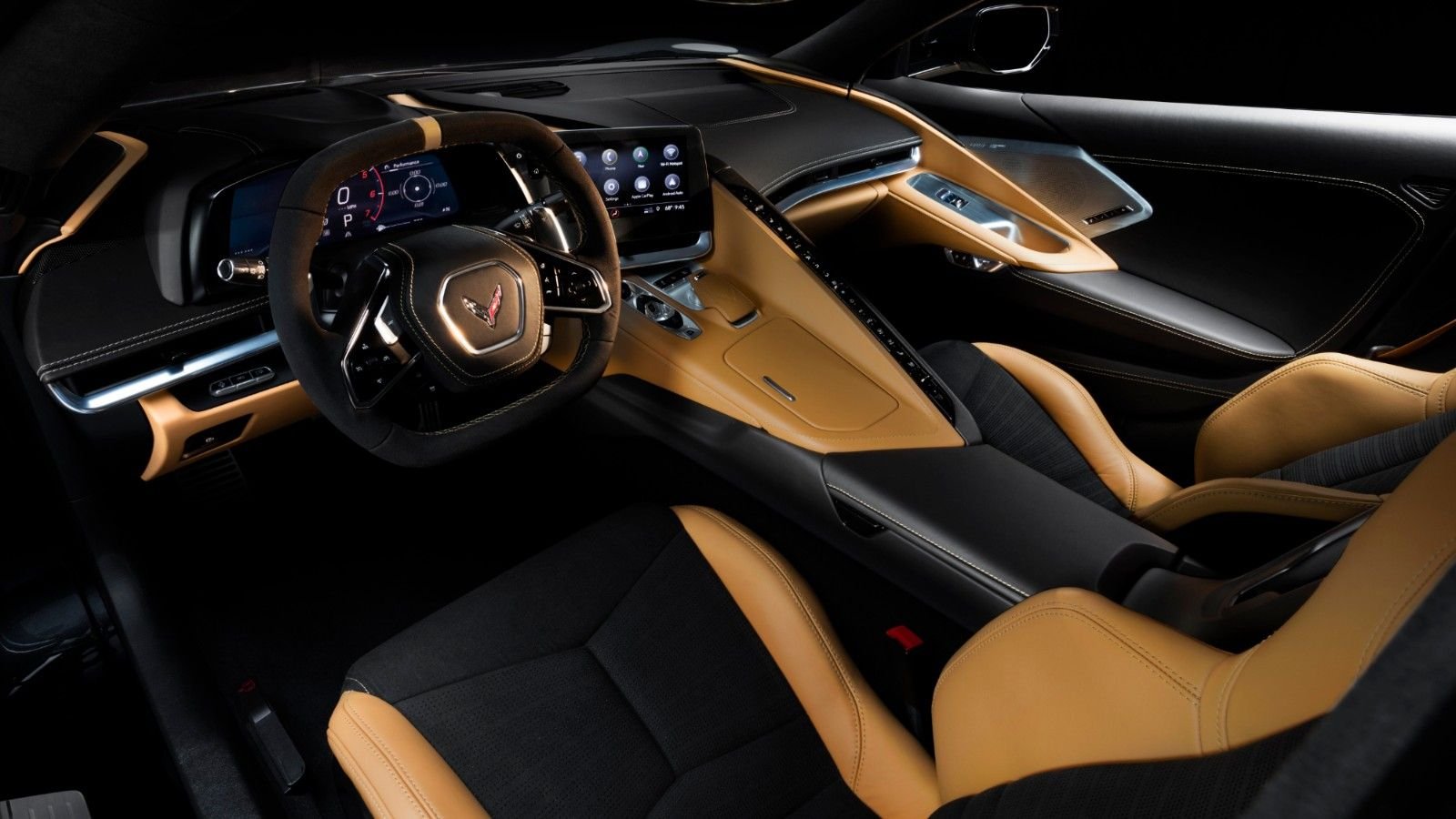GM Engineer Explains C8 Corvette's Interior Design
Corvette interior design manager Tristan Murphy explains in depth the functional reasoning behind the C8's cabin.




















Functional Reasoning
There isn't much not to like about the brand new C8 Corvette. But the interior has remained a small point of contention among enthusiasts. Some love it, some hate it, and some make fun of that long row of buttons. But as is typical, the C8's interior design isn't just for looks - there are functional reasons behind the way things were done. We know this because interior design manager Tristan Murphy explained the cabin's many interesting details in depth in this fascinating interview with Gear Patrol.
Photos: Chevrolet
Low and Lean
For starters, Murphy made a point to explain why the C8 needed a low and thin dashboard, which is a big reason for the long row of button's existence. “The whole point of [getting] that engine behind you is it allows you to have a much lower cowl…you no longer have to sit above the engine, and you can get these really great sightlines,” Murphy said.
Photos: Chevrolet
Great Views
"And that’s what a mid-engine car does," Murphy continued. "The last thing we want to do was have this amazing down vision, then have this typical tall instrument panel. It was about, how do we change the game and how do we reconstruct a dashboard here to be as low and as thin as possible? That was the mission statement of the whole car." Who knew that a dashboard design could be such an important part of engineering a car?
Photos: Chevrolet
Tiny Components
That meant not just relocating a bunch of buttons, but also making components as tiny as possible. "[The C8] has the thinnest air vents in the production world," Murphy said. "We’re 19 millimeters tall, and we had to invent that. Then we had to do a brand new HVAC system that controls that velocity [at that vent height]. Normal vents are usually about 36 to 40 millimeters tall, but every single millimeter that goes up the instrument panel, the dash has to go along, right?"
Photos: Chevrolet
Sneaky Height
And that brings us back to those buttons. "For your typical stack — I use the Toyota Supra as a good example — they’ve got a big bank of buttons with your knobs and your HVAC, that’s about 30 millimeters tall," Murphy said. "Then, you have an audio bank, that’s usually 15–20 millimeters tall. Then you have your screen. Before you know it, [the dashboard] is almost an inch and a half or two inches taller because of those decisions of how you stack up audio and HVAC button controls."
Photos: Chevrolet
Removing Annoyances
Thus, Corvette designers thought long and hard about how they could retain hard controls without keeping them in the dash. "If we would’ve buried [controls] on the screen, you would now be going through menus to get them, which is really annoying," Murphy said. "The reason that works for Tesla or the new Volvos is they have a tall portrait screen. We wanted to do a low, wide-aspect ratio screen."
Photos: Chevrolet
Best of Both Worlds
Corvette engineers found the inspiration for a solution in an unlikely place - the cockpits of jet planes, where controls wrap around the pilot. Thus, they came up with their own similar setup, which seemingly solves all of their problems in one felt swoop. Drivers get to keep their hard controls, yet they also retain that great sightline.
Photos: Chevrolet
Looking for Inspiration
Murphy admits that this wasn't an easy process. The team discussed possible solutions for months, going through multiple design reviews and clay models before making a decision. They also looked at much more expensive mid-engine supercars like the LaFerrari, Porsche 918, and various McLarens for ideas as well.
Photos: Chevrolet
Wow Factor
"Obviously, these are million-dollar hypercars," Murphy said. "But you just get in and it feels special, right? So that was the whole thing: how do we make [the C8] feel special? I never felt confined [by other departments]. If anything, we felt very intimidated…we need to still come in and surprise people. They need to get inside this thing and be like, 'Holy shit.'"
Photos: Chevrolet
Old and New
In the end, we'd say that the Corvette interior team nailed it. Whether you like that giant row of buttons or not, you can't help but admit that it's better than having no hard controls. After all, some of us prefer to keep a few old school features in our ultra-modern mid-engine supercars, thank you very much.
Photos: Chevrolet
For help with your maintenance and repair projects, please visit our how-to section in the forum
